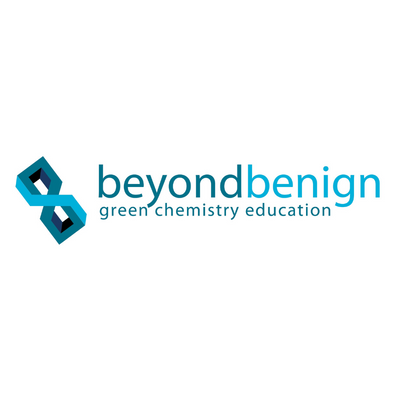Polymers and Green Chemistry

Summary
The purpose of this lab is to introduce students to some basics of the chemistry of polymers. Polymer chemistry is often an afterthought in the General Chemistry curriculum, but polymers are very much present in students’ lives. The lab introduces the relationship between molecular structure (e.g., branched vs. linear, bulky vs small side groups) and bulk properties (e.g., flexibility). This lab is also “pre-stoichiometry” in the sense that precursor ideas to stoichiometry are introduced without formal stoichiometric terminology. In one activity, the ratio of reacting alginate to calcium ions is varied to find the maximum yield of alginate gel. The lab introduces atom economy using addition and condensation polymers without formal stoichiometry.
Students are likely to be at least a little familiar with recycling polymers before they even step into the lab. Building on this, using polymers as a lab topic provides an opportunity to bring Green Chemistry and Sustainability concepts into the lab course. Working with biologically-sourced, water-soluble starch or alginate polymers should be greener than working with polystyrene or nylon polymers which do not dissolve in pure water. The aforementioned atom economy example is also related to Green Chemistry principles.
This document features contributions from Bozana Lojpur at Bradley University and Saskia van Bergen at the Washington State Department of Ecology.
Students are likely to be at least a little familiar with recycling polymers before they even step into the lab. Building on this, using polymers as a lab topic provides an opportunity to bring Green Chemistry and Sustainability concepts into the lab course. Working with biologically-sourced, water-soluble starch or alginate polymers should be greener than working with polystyrene or nylon polymers which do not dissolve in pure water. The aforementioned atom economy example is also related to Green Chemistry principles.
This document features contributions from Bozana Lojpur at Bradley University and Saskia van Bergen at the Washington State Department of Ecology.
Keywords
Safety Precautions, Hazards, and Risk Assessment
Chemicals and their CAS numbers.
Calcium nitrate hydrate 35054-52-5
Sodium alginate 9005-38-3
Sulfuric acid 7664-93-9
2-propanol 67-63-0
All solution containers should be clearly labeled. Precautions, including proper personal protective equipment such as goggles and gloves, should be used when working with some aqueous solutions, such as those of sulfuric acid and 2-propanol. Avoid spilling the solutions on clothing. Add liquids to polymer samples only in glass containers like beakers to keep the liquids from reacting with any lab surfaces. Always wash your hands after completing the experiments and demonstrations. DO NOT pour the calcium alginate gel into a sink. Pour the gel into a beaker or plastic tub, allow it to settle for a couple of hours, and decant any liquid that has separated from the gel. The remaining gel can be discarded into the trash.
Calcium nitrate hydrate 35054-52-5
Sodium alginate 9005-38-3
Sulfuric acid 7664-93-9
2-propanol 67-63-0
All solution containers should be clearly labeled. Precautions, including proper personal protective equipment such as goggles and gloves, should be used when working with some aqueous solutions, such as those of sulfuric acid and 2-propanol. Avoid spilling the solutions on clothing. Add liquids to polymer samples only in glass containers like beakers to keep the liquids from reacting with any lab surfaces. Always wash your hands after completing the experiments and demonstrations. DO NOT pour the calcium alginate gel into a sink. Pour the gel into a beaker or plastic tub, allow it to settle for a couple of hours, and decant any liquid that has separated from the gel. The remaining gel can be discarded into the trash.
Teacher Recommendations or Piloting Data (if available)
See attached file. We have been running this lab for a few years now.
Digital Object Identifier (DOI)
https://doi.org/10.59877/MWCP4494
File (PDF, PPT, image, etc)
File (PDF, PPT, image, etc)
Creative Commons License

This work is licensed under a Creative Commons Attribution-NonCommercial-ShareAlike 4.0 International License.
